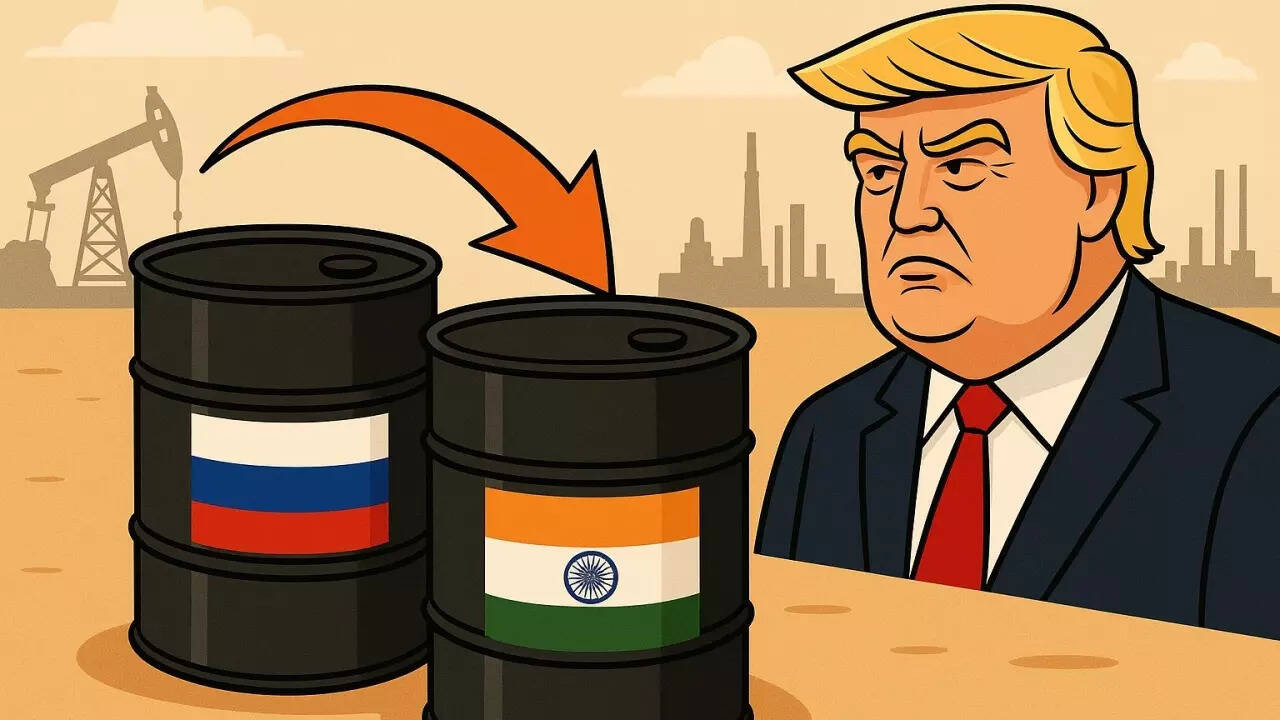US sanctions on Russia’s Rosneft and Lukoil, effective November 21, 2025, are impacting India’s oil imports. Russian crude loadings for India have significantly dropped, forcing refiners to seek alternative sources. While direct procurement from sanctioned entities will cease, Russia’s oil may continue to flow through less transparent channels, impacting global trade dynamics.
India Navigates the Murky Waters of Russian Oil Amidst Trump-Era Sanctions
The global energy market is rarely a placid lake. Instead, it’s more akin to a turbulent ocean, constantly buffeted by geopolitical winds and shifting economic tides. And right now, India finds itself charting a course through some particularly choppy waters, thanks to the resurgence of Trump-era sanctions targeting Russia. But what does this mean for India’s appetite for Russian crude oil, and how will it impact consumers at the pump?
The short answer is: it’s complicated.
Donald Trump’s initial sanctions, aimed at crippling Russia’s ability to fund its war in Ukraine, are back in the spotlight. These measures cast a long shadow, threatening secondary sanctions against any entity found significantly aiding Russia’s military-industrial complex. This includes banks, businesses, and even nations purchasing Russian oil above a price cap set by the G7 nations.
So, will India slam the brakes on Russian crude oil imports? The reality is much more nuanced.
Decoding India’s Energy Strategy: Balancing Needs and Geopolitics
India’s energy needs are colossal and growing. As one of the world’s fastest-expanding economies, the nation requires a reliable and affordable energy supply to fuel its industries and power its burgeoning cities. Before the war in Ukraine, Russian oil was a relatively minor player in India’s energy mix. However, as Western nations shunned Russian crude, India emerged as a key buyer, snapping up discounted barrels and significantly increasing its reliance on Russia.
This strategic pivot wasn’t about political alignment but rather a pragmatic response to market forces. Russian oil offered a cost-effective solution to meet India’s soaring energy demands, especially crucial when global prices were sky-high.
But the looming threat of secondary sanctions is forcing India to reassess its approach. Sources within the Indian government and the oil industry suggest a multi-pronged strategy is taking shape. This doesn’t necessarily mean a complete halt to Russian oil imports, but rather a careful recalibration.
How India Might Navigate the Sanctions Tightrope
Several options are on the table. First, Indian refineries could meticulously ensure they are adhering to the G7 price cap on Russian oil. This involves rigorous due diligence and careful monitoring of transactions to avoid triggering secondary sanctions.
Secondly, diversification of supply sources is likely. India is actively exploring alternative suppliers, including those in the Middle East, Africa, and even potentially reviving talks with Iran, should sanctions against them ease.

Another tactic might involve increased use of the Rupee-Ruble trade mechanism. By settling payments in local currencies, India and Russia can bypass the US dollar and potentially mitigate some of the risks associated with sanctions. This approach, however, faces its own challenges, including currency fluctuations and the limited convertibility of the Ruble.
Interestingly, a gradual reduction in reliance is already underway. Recent data shows a slight decrease in Russian oil imports compared to peak levels seen in 2023. Whether this is a direct consequence of the impending sanctions or a proactive measure to diversify remains a subject of debate.
The Ripple Effect: What it Means for Consumers
The dance around Russian oil has implications far beyond government corridors and refinery boardrooms. Ultimately, these decisions trickle down to the average consumer at the petrol pump.
If India significantly reduces its intake of discounted Russian crude, it could potentially lead to higher prices for petrol and diesel. This would exacerbate inflationary pressures and impact household budgets. The government is keenly aware of this risk and is likely to implement measures to cushion the blow, such as adjusting excise duties or exploring alternative subsidy schemes.
Furthermore, a disruption in the global oil supply chain, even a localized one, can have a ripple effect, impacting global oil prices and affecting economies worldwide.
The Road Ahead: Adaptability and Strategic Foresight
Navigating the complex geopolitical landscape surrounding Russian oil requires a delicate balancing act. India must weigh its energy security needs against the risk of inviting sanctions from Western powers. The nation’s ability to adapt, diversify, and employ strategic foresight will be crucial in weathering this storm. This could include investing more in renewable energy sources. See [our article on renewable energy in India](insert internal link here).
The situation remains fluid, and the coming months will be critical in determining how India navigates this intricate geopolitical and economic challenge. One thing is certain: the world is watching closely.
Ultimately, India’s approach will likely be a carefully calibrated blend of pragmatism, diplomacy, and strategic diversification, aimed at securing its energy future while minimizing the risk of collateral damage from the ongoing geopolitical tensions. The stakes are high, and the choices India makes will have far-reaching consequences for its economy, its foreign policy, and the global energy market.







